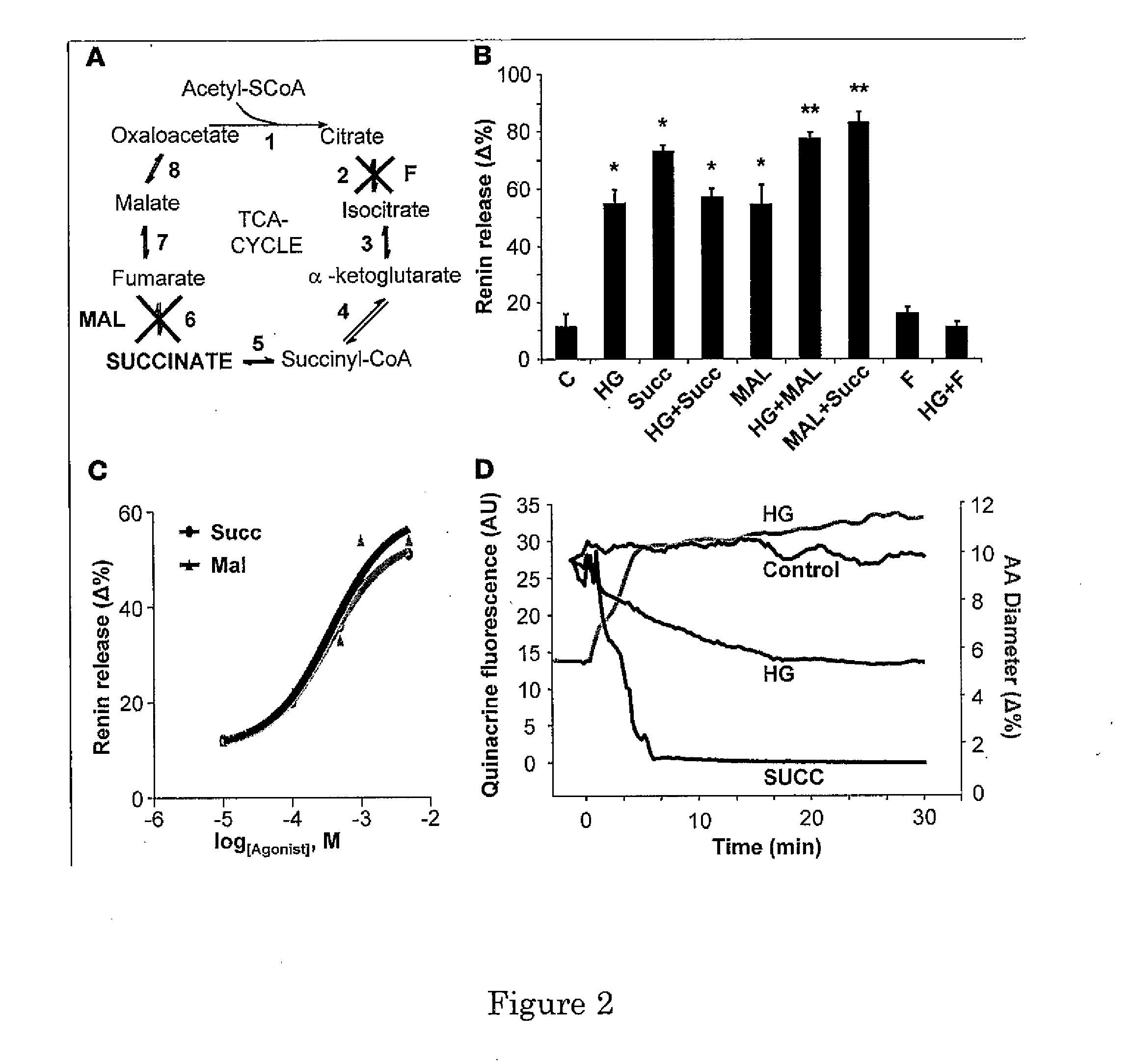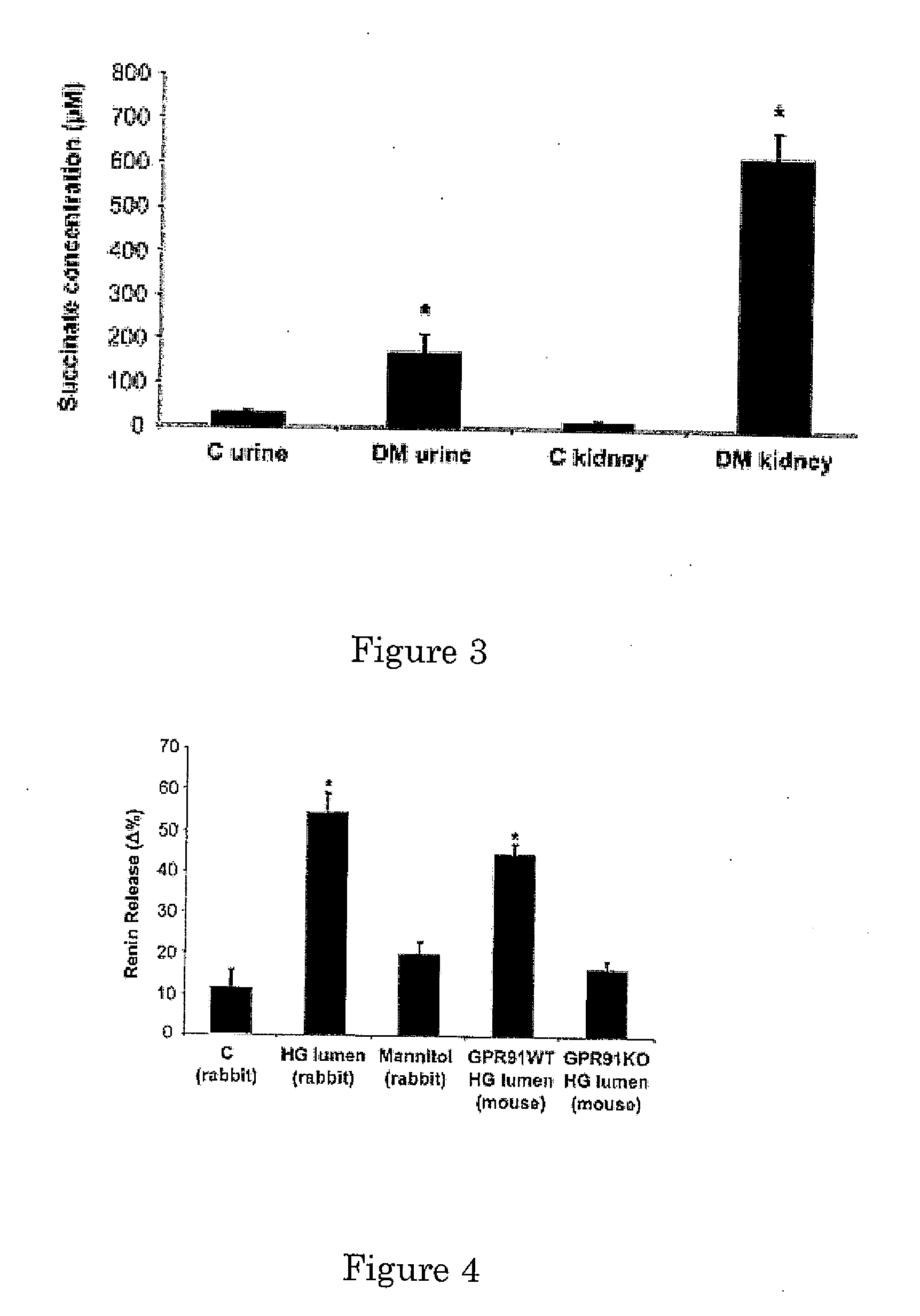Measurement of a dicarboxylate in urine samples as a novel biomarker of kidney damage
a biomarker and dicarboxylate technology, applied in the field of kidney disease, can solve the problems of difficult to isolate acute and direct actions of hyperglycemia on glomerular structures, significant morbidity and mortality for millions of americans, and the primary cause and exact mechanism of ras activation in early diabetes remain elusiv
- Summary
- Abstract
- Description
- Claims
- Application Information
AI Technical Summary
Benefits of technology
Problems solved by technology
Method used
Image
Examples
Embodiment Construction
[0023]The existence of high levels of succinate in the urine may be indicative of kidney tissue damage of several origin including reduced blood supply, hypertension, metabolic diseases such as diabetes mellitus, metabolic syndrome, etc. The accurate and reliable determination of succinate concentrations in urine would therefore provide an easily performed, non-invasive procedure for the detection of kidney damage. Such a procedure should be used in routine medical exams and check-ups, and not only in high risk groups such as diabetic and hypertensive patients. This procedure would obviate the need to draw blood for analysis of kidney function (currently used), or would replace other high-cost diagnostic tests such as ultrasound, CT, MRI, or the use of radioisotopes. Development of a succinate strip (similar to glucose strips) to be used in fresh urine samples would provide a painless and convenient approach to monitor kidney function of an individual.
[0024]Currently, only one comme...
PUM
| Property | Measurement | Unit |
|---|---|---|
| temperature | aaaaa | aaaaa |
| temperature | aaaaa | aaaaa |
| pH | aaaaa | aaaaa |
Abstract
Description
Claims
Application Information
 Login to View More
Login to View More - R&D
- Intellectual Property
- Life Sciences
- Materials
- Tech Scout
- Unparalleled Data Quality
- Higher Quality Content
- 60% Fewer Hallucinations
Browse by: Latest US Patents, China's latest patents, Technical Efficacy Thesaurus, Application Domain, Technology Topic, Popular Technical Reports.
© 2025 PatSnap. All rights reserved.Legal|Privacy policy|Modern Slavery Act Transparency Statement|Sitemap|About US| Contact US: help@patsnap.com



